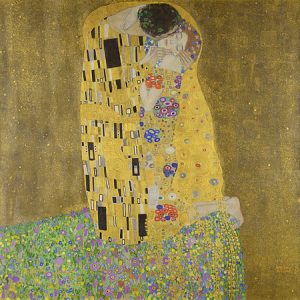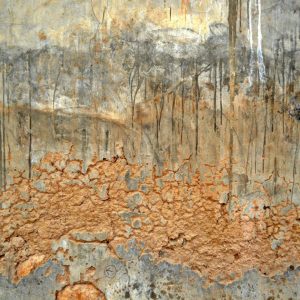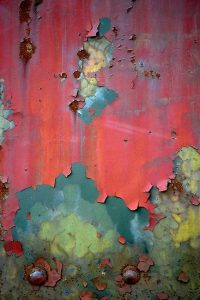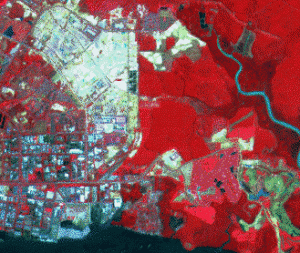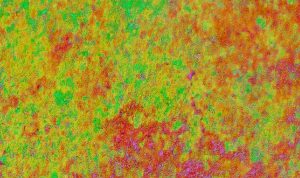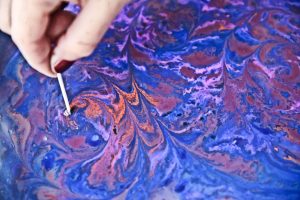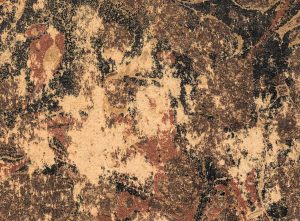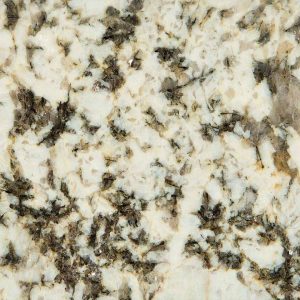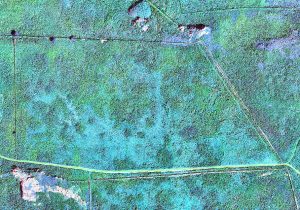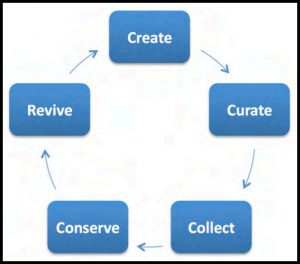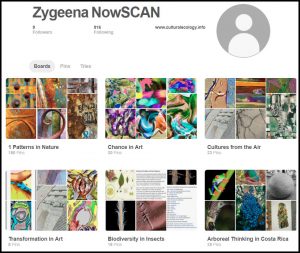1 Pattern in human nature
Albert Einstein has long been cited as a visual thinker, but few have looked in detail at the way he described thought:
“What, precisely, is ‘thinking’? When, on the reception of sense impressions, memory pictures emerge, this is not yet ‘thinking.’ And when such pictures form sequences, each member of which calls forth another, this too is not yet ‘thinking.’ When, however, a certain picture turns up in many such sequences, then—precisely by such return—it becomes an organizing element for such sequences, in that it connects sequences in themselves unrelated to each other. Such an element becomes a tool, a concept. I think that the transition from free association or dreaming to thinking is characterized by the more or less preeminent role played by the ‘concept'” (Einstein 1979, 7)..
Pattern exists in objects designed by people as well as in non human nature. That is to say as well as having the ability to recognise pattern we behave creatively as pattern-forming beings. Pattern as an expression of human creativity is an underlying visual framework that organizes surfaces or structures in a consistent, regular manner. In this context, pattern can be described as a repeating unit of shape or form, but it can also be thought of as the complex “mental skeleton” that organizes the parts of an artistic composition.
In the visual arts, style is a distinctive creative manner which permits the grouping of works into related categories. A style is a distinctive, and therefore recognizable, way in which an act is performed or an artifact made or ought to be made. Style refers to the visual appearance of a work of human creativity that relates it to other works by the same artist or one from the same period, training, location, “school”, or art movement. The notion of style has long been the art historian’s principal mode of classifying works of art. It is through changes in style that the history of art is shaped.
Painting styles are usually associated with an era in art history, defined by the influences of certain schools of thought. For example, the impressionists had a great influence on generations of artists who followed. Their application of paint, along with the loose suggestions of forms bathed in light created an upheaval in the art community. The Impressionists had broken away from traditional painting methods working in a manner that would clearly set them apart. They developed a different and unique style. But even as a group of artists who shared specific beliefs about light and colour, members of the impressionist school still created their own individual styles.
Artistic style is often divided into the general style of a period, country or cultural group, collection of artists or an art movement. Individual artists adopt the approved style of the group. Divisions within both types of styles are often made, such as between “early”, “middle” or “late”. In some artists, such as Picasso for example, these divisions may be marked and easy to see (Figs 1a & 1b), in others they are more subtle. Style is seen as being dynamic, always changing by a gradual process. The rapidity of stylistic change varies greatly, between the very slow development typical of prehistoric art or the art of Ancient Egypt to the rapid changes in Modern art. Style often develops in a series of jumps, with relatively sudden changes followed by periods of slower development. However, art movements are simply a historical convenience for grouping together artists of a certain style so that they may be understood within a specific context of pattern or time.
One of the functions of style in art is to give back what technology takes away. And what technology takes away most often now is a sense of age. Pieces of technology more and more feel as if they come from nowhere. They vanish into obsolescence in a matter of years. Being temporary, they take on the status of utterance. They’re like speech instead of writing; they hang in the air for an instant, and then they’re gone. The same is true for much of the built environment. And the same is true for much of contemporary art.
Fig 1a & 1b Two of Picasso’s styles
Style is not a matter of right and wrong but of what is appropriate for a particular setting and audience. Consider the following two passages, which were written by the same author on the same topic with the same main idea, yet have very different literary styles:
“Experiments show that Heliconius butterflies are less likely to oviposit on host plants that possess eggs or egg-like structures. These egg mimics are an unambiguous example of a plant trait evolved in response to a host-restricted group of insect herbivores.”
“Heliconius butterflies lay their eggs on Passiflora vines. In defense the vines seem to have evolved fake eggs that make it look to the butterflies as if eggs have already been laid on them.” (Example from Myers, G. (1992). Writing biology: Texts in the social construction of scientific knowledge. Madison: University of Wisconsin Press. p. 150.)
What changed was the audience. The first passage was written for a professional journal read by other biologists, so the style is authoritative and impersonal, using technical terminology suited to a professional audience. The second passage, written for a popular science magazine, uses a more dramatic style, setting up a conflict between the butterflies and the vines, and using familiar words to help readers from non-scientific backgrounds visualize the scientific concept being described. Each style is appropriate for the particular audience.
http://www.learnnc.org/lp/editions/few/684
Discerning patterns in nature is often the first step in making patterns from nature. Using patterns to create a style can be regarded as the final step in human artistic creativity A good example of the process of turning patterns in nature into an artistic style is the work of Gustav Klimt (Fig 2).
Fig 2 ‘The Kiss (Gustave Klimpt
Klimt’s painting style was based on exotic patterns taken from Byzantine, Greek and Egyptian art which in turn had been derived from patterns in nature. His pictures are ornate, elaborate and decorative, often including bright patterns and gold leafing. He was good at the seamless mixing of historical and traditional patterns with a contemporary approach to painting, combing abstracted patterns with realistic figure painting. These pictures demonstrate how his new style spanned the abstract and realism movements in the 1890s.
2 Patterns in nature
We make sense of the world by looking for repeating qualities in phenomena around us. We discern patterns in nature and then try to work out the reasons behind repeating motives, events and processes. An extreme form of this human trait is “patternicity,” or the tendency to find meaningful patterns in meaningless noise; like seeing faces or landscapes on decaying surfaces (Figs 3 & 4),
Fig 3 Pin of decaying wall plaster
Fig 4 Pin of flaking paint on a metal surface
At a very simple level, we may attempt to understand patterns in nature by grouping things by colour, shape, texture, number or according to qualities of sound, smell, taste, touch or properties of movement. Or we may group them according to purpose, function or any one of many conceptual organizers. A common visual conceptual organiser is the discovery of a frequently found arrangement of surface markings.
3 Taking an artful view of scientific problems
As natural phenomena, patterns in the non human world do not adhere to a standard set of rules; we can identify patterns, but they are not necessarily uniform. Patterns in nature are visible regularities of form found in the environment and are the outcomes of biophysical processes such as weathering and natural selection. These patterns recur in different contexts and can sometimes be modelled mathematically. Natural patterns include symmetries, trees, spirals, meanders, waves, foams, tessellations, cracks, stripes and spatial distributions of plants and animals (Fig 5).
Fig 5 Three quantifiable natural spatial distributions
https://www.pinterest.co.uk/pin/522417625518463881/
Early Greek philosophers studied pattern in nature, with Plato, Pythagoras and Empedocles attempting to explain order in the environment. In the 19th century, Belgian physicist Joseph Plateau examined photographs of soap films, leading him to formulate the concept of a minimal surface. German biologist and artist Ernst Haeckel painted hundreds of marine organisms to emphasise their symmetry. Scottish biologist D’Arcy Thompson pioneered the study of growth patterns in both plants and animals, showing that simple equations could explain spiral growth. In the 20th century, British mathematician Alan Turing predicted mechanisms of morphogenesis which give rise to patterns of spots and stripes on body surfaces. Studies of pattern formation now make use of computer models to simulate a wide range of patterns. Hungarian biologist Aristid Lindenmayer and French American mathematician Benoît Mandelbrot showed how the mathematics of fractals could create plant growth patterns.
Pattern in nature is a recurring characteristic that helps in the identification of any ecological problem. It might also act as a predictive indicator of how that problem might be expressed in the future. Mathematics, physics and chemistry can explain patterns in inanimate nature at many levels. Patterns in living things are explained by the biological processes of natural selection governing their growth, reproduction and ageing.
4 Tonal mapping of plant distribution: science into art
Over the past half century, remote sensing imagery has been acquired by a range of airborne and space-borne sensors. Classifying and mapping vegetation is an important technical task for managing natural resources as vegetation provides a base for all living beings and plays an essential role in affecting global climate change, such as influencing terrestrial CO2. Vegetation mapping also presents valuable information for understanding the natural and man-made environments through quantifying vegetation cover from local to global scales at a given time point or over a continuous period. It is critical to obtain current ,states of vegetation cover in order to initiate vegetation protection and restoration programmes.
Four main types of information contained in an optical image are often utilized for the interpreting images obtained from remote sensing:
- Radiometric Information (i.e. brightness, intensity, tone),
- Spectral Information (i.e. colour, hue),
- Textural Information,
- Geometric and Contextual Information
In displaying a colour composite image, three primary colours (red, green and blue) are used. When these three colours are combined in various proportions, they produce different colours in the visible spectrum. The display colour assignment for any band of a multispectral image can be done in an entirely arbitrary manner, for instance by manipulating its hue saturation and lightness In this case, the colour of a target in the displayed image does not have any resemblance to its actual colour. The resulting product is known as a false colour composite image. There are many possible schemes to produce false colour composite images to detect certain objects in the image.
Fig 6 False colour composite image from a remote cesnsus.
This false colour composite scheme allows differences in vegetation to be detected readily in the image (Fig 6 ). In this type of false colour composite images, vegetation appears in different shades of red depending on the types and conditions of the vegetation. Clear water appears dark-bluish (higher green band reflectance), while turbid water appears cyan (higher red reflectance due to sediments) compared to clear water. Bare soils, roads and buildings may appear in various shades of blue, yellow or grey, depending on their composition.
This kind of tonal mapping of vegetated microcosms often produces images that are visually pleasing. As such, these images expressing patterns in nature can bring together scientists and artists seeking common ground. Here is an example of how a common understanding based on the principles of ecology and abstract art can be forged in the focus of remote censoring. The ecological highlight is the distribution pattern of bluebells in open grassland on the small Welsh offshore island of Skomer. (Figs 7-8 ).
Fig 7 Distribution of bluebells in the south west corner of field 5; false colour composite scheme from a drone census, Skomer, May, 2017.
red = bluebells; green = dead bracken fronds; blue = teucrium grassland
Fig 8 Another false colour composite image of part of Field 17, Skomer, May 2017.
This field had grown a crop of potatoes in 1948, since when it had been left to develop as a bracken/woodsage grassland heavily grazed by rabbits. From the late 1980s the field hadbeen mowed to kill bracken after which it had been invaded by seeding bluebells. The path to the farm is acting as an impediment to the spread of bluebells from the base of a rock outcrop.
5 Paper marbling a link between art and geology
Paper marbling is a method of aqueous surface art, which can produce patterns similar to smooth marble or other kinds of natural surfaces. The patterns are the result of colour floated on either plain water or a viscous solution known as size, and then carefully transferred to an absorbent surface, such as paper or fabric. Through several centuries, people have applied marbling to a variety of flat materials and it is often employed as a writing surface for calligraphy, and especially book covers and endpapers in bookbinding and stationery..
Fig 9 Making marbled pattern; swirling the pigment
There are several methods for making marbled papers. A shallow tray is filled with water, and various kinds of ink or paint colours are carefully applied to the surface with an ink brush. Various additives or surfactant chemicals are used to help float the colours. A drop of “negative” colour made of plain water with the addition of surfactant is used to drive the drop of colour into a ring. The process is repeated until the surface of the water is covered with concentric rings.
The floating colours are then carefully manipulated to make a pattern either by blowing on them directly or through a straw, fanning the colours, or carefully using a human hair to stir the colours (Fig 9). In the 19th century, Tokutaro Yagi, the Kyoto master of Japanese marbling (suminagashi), developed a method that uses a split piece of bamboo to gently stir the colours, resulting in concentric spiral designs.
In the final step a sheet of art paper is then carefully laid onto the water surface to capture the floating design. The paper must be strong enough to withstand being immersed in water without tearing.
The scientific reason that marbling works is because water molecules like to stick together, a property called surface tension. This property allows very thin layers of ink to float on water, mixing in beautiful patterns when surface tension is disrupted with a drop of detergent, a tool like a paintbrush, or movement. To marble paper, you have to use dye or paint that floats on the water where it can be easily transferred to paper.
Fig 10 Marbled book cover
Marbling is an art (Fig 10) based on the imitation of patterns made in limestone under intense volcanic heat (Fig 11). It produces the same kinds of patterns as those produced by rendering of digital images to investigate ecological patterns in grassland (Fig 12).
Fig 11 Polished section through Alpine white granite
Fig 12 False colour rendering of remote census of the distribution of bracken and woodsage Field 5, Skomer, August 2017
6 Cultural ecology of thinking with pictures
The study of ecology as a scientific enterprise within biology involves looking at species within a wider environment. For example a rainforest exists within a greater global biosphere. The rainforest ecology is affected by changes in its internal relationships, such as the ebb and flow of species due to fluctuations in food chains, and is also affected by external shocks, such as climate change. In a similar fashion, human culture exists within a wider political, social and economic environment with both proximate and remote connections. This blog deals with just one of these wider cultural connections, between style in art and pattern in nature. Both of these relationships are based on a human response to visual interrogations of the environment. A creative learning behaviour is activated, which evolved as part of a cultural survival mechanism for a naked ape in a dangerous environment.
A regenerative, cyclical model of creative culture has been proposed by Andrew Missingham. He calls it ‘the creativity filter’, where creativity of all kinds is processed to become culture. This takes place in a dynamic process whereby the outcome of a creative act becomes categorised and evaluated as conserved heritage, which then serves as a stimulus for further creativity.
Within this cultural ecosystem there is a constant cycle of the regeneration of creativity from earlier ideas (Fig 13). A new idea in art, science or sociology is the first step, which often occurs at the margins of society and can be transgressive of current accepted norms. Most creative work stops there. Step two, if it happens, is that the creativity is curated, that is to say choices are made about what to take up and what to ignore, about what works and what doesn’t. In the third collection phase the creativity is taken up more widely, and people buy or experience it, in other words collect useful examples. In the next phase the creativity is evaluated and the valued elements are conserved. Once conserved they may be re-used to create something else. For example, one role of libraries is to stimulate new intellectual property from their collections and holdings. Intellectual property exists within culture on a continuum, and when public institutions make content free for reuse this ‘is not generosity but part of a library’s purpose.There is a similar role for public art galleries
Fig 13 The cultural ecology of creativity
http://www.ahrc.ac.uk/documents/project-reports-and-reviews/the-ecology-of-culture/
In the current context of the immersion of people in social media it is important to evaluate the various platforms as tools for people to engage creatively within their mental ecosystem. Bearing in mind that the cultural currency of social media involves storing, sharing and exchanging pictures, the obvious platform for running and managing a programme of creativity is Pinterest.
Pinterest can be thought of as a cultural force that brings picture collecting into the international social sphere of cultural ecology. This is because the three powerful human traits behind creativity are accommodated within Pinterest, namely collecting, sorting and storing for future use to support the development of new ideas. These behaviours are an expression of the childhood habit of taxophila.
When a young man with a childhood passion for collecting things like insects and stamps combined his passion with design and software engineering skills, Pinterest was born. Ben Silberman along with his friends and colleagues Paul Sciarra and Evan Sharp started the development of Pinterest in December 2009. Pinterest is now an online pinboard where people pin images and organize pictures into self curated virtual boards (Fig 14).
Fig 14 Pinterest home page of Zygeena
At Pinterest, they continually store, update and serve feeds for millions of users and fan out millions of newly created pins/repins to thousands of followers, leading to billions of operations everyday. Discovery, collection and curation of inspirational content are the two primary categories of user activity on Pinterest. Content curation is the gathering, organizing and online presentation of pictures related to a particular theme or topic. As a rule, a content curation site reproduces some of the original content and links to the full entry. Some content curation sites also provide original content, interpretation and commentary. Critics of online content curation argue that the practice is a poor substitute for content creation on the part of the site operator, and a poor substitute for individual research on the part of the user. Furthermore, some such sites are little more than marketing tools. However, content curation sites can be useful to people who want a quick snapshot of current content on a particular topic. In relation to the creativity filter Pinterest is a good platform with which to experiment.
The Pinterest ‘follow model’ is an invention to aid content discovery. It also has great potential for promoting creativity to power the picture filtering process of cultural ecology. The ‘follow’ model allows users to follow other users or follow boards created by other users, evaluating the ideas embedded in the pictures. For example, a running enthusiast could choose to either follow the ”nike brand” on Pinterest or follow the ”shoes” board created by collectors of ”nike brand”. Hence, each user/board has a list of followers who subscribe to the ideas embodied in the pins assembled on that board or gathered from other people’s boards by that user. Similarly, each user has a list of followees, who are the boards/users, the user is following. The following-feed for a user consists of content aggregated from all the followees of the user. Each time, a user accesses pinterest.com, Pinterest renders the following-feed of pins to the user.
A large number of social networks have embraced the ‘follow model’, including Tumblr and Instagram. The following-feed is a core piece of user experience for the majority of social networks today.
As to how Pinterest works, initiating a search with the phrase ‘patterns in nature’ will bring up a vast number of boards and images, To take just one example at random, in January 2018 a search for Patterns in Nature brought up a collection of 65 boards entitled Nature’s Pallet with a total of 11,368 pins. Dora Cheatham assembled the boards by collecting and classifying pins taken from the boards of others. Her collection had 263 followers and Dora was following 240 other boards, many of which had thousands of pins Within Nature’s Pallet, only 13 boards had ‘nature’ in the title. Of these, 4 were entitled Patterns in Nature, and had the following subtitles, Fractals (59 pins), Textures and Shapes (139 pins), Hearts (42 pins) and Spirals’ (82 pins). Together the pins on these boards only amounted to about 3% of the total pins on Dora’s site, but these four boards were followed by almost a third of of Dora’s followers. From the use of the title “Nature’s Pallet” and the artistic cropping of the pictures there can be little doubt that the main driver of the collection is an aesthetic appreciation of natural form and colour.
It has been argued that the experience of beauty is in effect a mix of order and disorder. Beauty, is an experience of successfully discovering order or patterns. If something is too orderly, it becomes boring, If there is too much disorder, it becomes confusing. Between these extremes are structures in which order and disorder are mixed in such a way that discovering structures remains possible for an extended time and looking at it, we are again and again rewarded with discovering pleasing forms. The result is an ongoing experience of beauty and its fascination, which is revealed in the pins that Pinterest users choose to upload and follow. Nevertheless, Pinterest is a free library from which to gain knowledge and carry out research. For those looking for windows from art to science the boards labelled ‘fractals’, ‘textures’ and shapes’ and ‘spirals’ are starting points for taking an artful view of the science behind patterns in nature (Fig 15).
Fig 15’ Pin of a succulent plant illustrating a pattern of spiral growth
https://www.pinterest.co.uk/doracheatham89/
In these respects, a Pinterest account consists of a huge database of pictures. Each one is the outcome of someone’s photographic creativity, from which the account holder can retrieve pictures to illustrate a theme. The word ‘theme’ refers to the subject or topic on which a person speaks, writes or thinks and is the name of the pin board . Each selected picture encapsutlates an idea as a mental impression that illustrates and supports the theme. The picture is pinned to the theme’s board to be curated and then stored for the future development of the theme. Pinterest has a facility to subdivide a theme into categories, each of which illustrate concepts underlying the theme. A concept is a generalized idea about a class of objects, attributes, occurrences, or processes that has been given a name.
For those interested in pictorial ideas that provide portals into science Zygeena’s NowSCAN boards are being developed for research into visual thinking about style in art and pattern in nature.
https://www.pinterest.co.uk/zygeena/
The main board is entitled “Patterns in and from Nature”. It is a work in progress and the theme has been provisionally divided into the following 17 concepts.
An Artful View of Ecological Microcosms.
Populated Microcosms:
Microcosms in Bark:
Tonal Mapping of Grassland Microcosms:
Ageing at the Surface:
Patterns in Plant Distribution:
Fractal Growth:
Textures and Shapes:
Georgia O’Keefe:
Tourist Biomes, Costa Rica:
Leaves:
Edward Weston:
Gustav Klimpt:
Chance in Pattern:
Cultures from the Air:
Pattern in Insects:
Spiral Growth:
These concepts are being developed in the following wiki. Go to the Pinterest pages.


